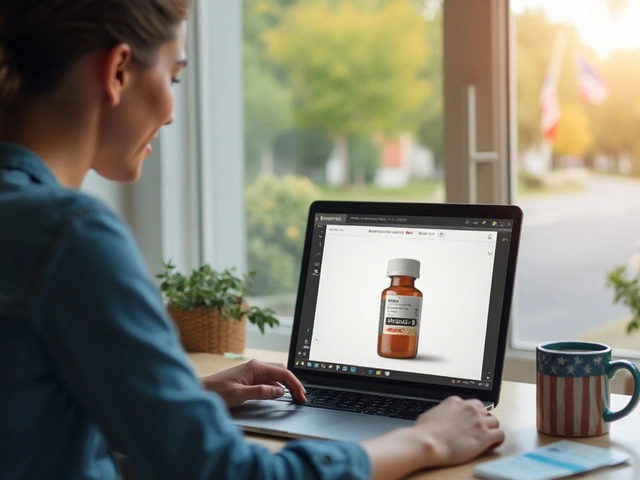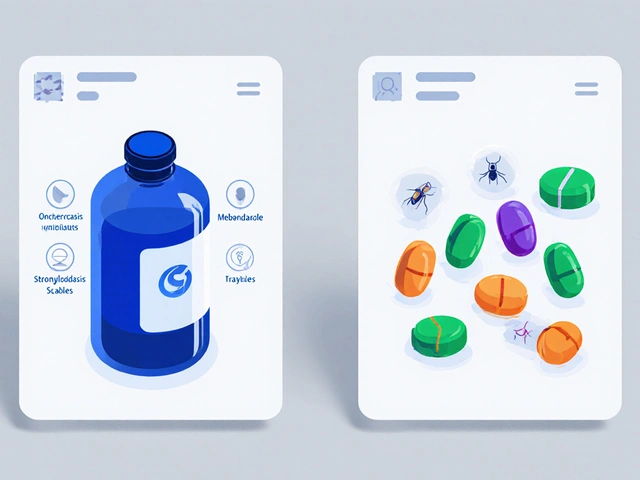Getting the wrong medication or the wrong dose from your pharmacy isn’t just a mistake-it’s a safety risk. Maybe you picked up a pill that looked different than usual. Maybe the label says 10 mg but your doctor prescribed 5 mg. Or maybe the pharmacist didn’t warn you about a dangerous interaction with your other drugs. Whatever it was, you noticed something off. Now what?
Reporting a pharmacy error isn’t about blaming someone. It’s about making sure no one else gets hurt. Most errors happen because of system flaws-not because a pharmacist is careless. But if no one reports them, those flaws never get fixed.
What Counts as a Pharmacy Error?
A pharmacy error isn’t just getting the wrong drug. It includes:
- Wrong dosage (too much or too little)
- Wrong medication (e.g., amoxicillin instead of azithromycin)
- Wrong patient (someone else’s prescription filled for you)
- Missing or incorrect labeling (no expiration date, no instructions)
- Failure to warn about drug interactions or side effects
- Expired or contaminated medication
Even if you didn’t take the medicine, if you caught it before use, that’s still a reportable error. These are called near-misses, and they’re just as important as actual harm. The Institute for Safe Medication Practices (ISMP) says near-misses are the best way to spot weak spots in the system before someone gets hurt.
Where to Report a Pharmacy Error
You have several options, depending on where you live and how serious the error was. Here’s what works in the U.S. and what you should do first.
1. Report to the State Board of Pharmacy
This is your strongest first step. Every state has a pharmacy board that licenses pharmacists and investigates complaints. In California, for example, you can file online at www.pharmacy.ca.gov or download a PDF form. You’ll need:
- A copy of the prescription
- The original medication container (if you still have it)
- Your name and contact info
- Details: what happened, when, and who was involved
Most states require the board to acknowledge your complaint within 14 days. Some, like California, let you track your case online. In 2021, California’s board received over 1,800 complaints-and 217 led to disciplinary action against pharmacists or pharmacies.
2. Report to the FDA’s MedWatch Program
If the error caused harm-or could have caused serious harm-file with the FDA. MedWatch is the federal system for reporting adverse events with medications. You can report online, by phone (1-800-FDA-1088), or by mail using Form 3500B.
It’s not just for doctors. Consumers can and should report. In 2022, the FDA received over 1.3 million reports through MedWatch. About 8% of those were medication errors. The problem? Only 14% of serious errors get reported at all. If you don’t report, the FDA doesn’t know it happened.
Tip: Use the online portal. It’s faster. Electronic submissions are processed in under 6 business days on average.
3. Report to ISMP’s National Medication Error Reporting Program (MERP)
ISMP is a nonprofit that works with hospitals and pharmacies to prevent errors. Their MERP program is confidential, free, and designed to find root causes-not punish people.
You can call 1-800-233-7767 or report online. What makes ISMP different? They follow up. They don’t just collect data-they call you back to ask: What was going on when this happened? Was the pharmacy rushed? Were staff short-handed? Was the label hard to read?
ISMP analyzes about 12,000 reports a year. Their findings have led to changes in packaging, labeling rules, and pharmacy workflows across the country.
4. Report to Your Pharmacy Directly
Yes, go back to the pharmacy. Ask to speak with the pharmacist in charge. Say: “I received the wrong medication. I’d like to file a formal complaint.”
Many pharmacies have internal reporting systems. CVS and Walgreens log thousands of internal error reports each year. But here’s the catch: if you don’t report outside the pharmacy, there’s no guarantee anyone outside will see it.
Use the pharmacy’s report as a starting point-but don’t stop there. Go to your state board or the FDA too.

What Happens After You Report
Most people expect an apology or a call back. That doesn’t always happen. Here’s what usually follows.
State Board Investigation
After you file, the board reviews your complaint. They may:
- Request records from the pharmacy
- Interview staff
- Visit the pharmacy unannounced
If they find a pattern of errors or negligence, they can issue warnings, require retraining, fine the pharmacy, or even suspend the pharmacist’s license. But if it’s a one-time mistake with no harm, they might just send a reminder about proper procedures.
Don’t expect a personal update every week. The process can take 3 to 6 months. But if you provided solid evidence-like the bottle, prescription, and notes-you’re more likely to see action. A 2022 University of Michigan study found complaints with documentation were 3.7 times more likely to lead to corrective changes.
FDA and ISMP: System-Level Changes
The FDA doesn’t investigate individual cases like a court. They look at trends. If 50 people report the same error with the same drug-like a confusing label or a dosing mix-up-they might issue a safety alert, require a label change, or even pull the product.
ISMP does something even more powerful: they publish their findings. Their reports have led to:
- Redesigning pill bottles with clearer warnings
- Changing how high-risk drugs are stored in pharmacies
- Adding mandatory double-checks for insulin and blood thinners
One real case: A woman reported an insulin error to ISMP. The pharmacy had labeled it as 10 units when it was actually 100. ISMP shared the case with other pharmacies. Within months, several chains changed their insulin labeling protocol. That one report helped prevent dozens of potential overdoses.
What Won’t Happen
You won’t get compensation. You won’t get a refund automatically. You won’t always get a phone call.
The FDA’s 2022 survey found that 71% of people who reported through MedWatch never heard back. That doesn’t mean your report didn’t matter. It means the system isn’t built for personal feedback-it’s built for public safety.
That’s hard to accept. But if you report, you’re not just protecting yourself. You’re protecting the next person who walks into that pharmacy.
Why Most People Don’t Report (And Why You Should Anyway)
A 2023 survey found:
- 41% didn’t report because they didn’t know how
- 29% thought it wouldn’t make a difference
- 18% feared retaliation
Here’s the truth: Retaliation is rare. Pharmacies can’t legally punish you for reporting. If they do, that’s another violation you can report.
And yes, it might feel like shouting into the void. But think of it this way: If 10 people report the same error, it becomes a pattern. If it becomes a pattern, the system changes.
Dr. Michael Cohen of ISMP put it best: “The value of error reporting lies not in counting mistakes but in understanding their root causes to redesign systems that prevent harm.”

What You Can Do Right Now
Don’t wait. Don’t second-guess. Here’s your simple action plan:
- Save everything. Keep the pill bottle, prescription receipt, and any notes you made.
- Report to your state pharmacy board. This is the fastest way to get local action.
- Report to ISMP. They’ll dig into why it happened and push for nationwide fixes.
- Report to the FDA if there was harm or risk of harm. Especially with high-risk drugs like blood thinners, insulin, or chemotherapy.
- Follow up in 6 weeks. Call the state board. Ask if your case is open.
You don’t need to be an expert. You don’t need to know all the rules. You just need to care enough to speak up.
What’s Changing in 2025
There’s momentum. The FDA is launching a new mobile app for reporting in early 2024. California’s real-time tracking system has cut resolution times from 127 to 89 days. Congress is considering a national mandatory reporting law.
More states are requiring error reporting. In 2018, only 22 states had any rules. Now, 37 do. The global push for medication safety-backed by the World Health Organization-is making this a top priority.
Pharmacy errors aren’t going away. But they’re becoming harder to ignore.
When you report, you’re not just fixing one mistake. You’re helping fix the system.











Matthew Mahar
22 Nov, 2025
This post literally gave me chills-I almost took the wrong pill last month and didn’t even realize it until I saw the expiration date was 2019. I didn’t report it. I should’ve. Now I’m telling everyone I know.
Richard Wöhrl
23 Nov, 2025
Thank you for laying this out so clearly. I’ve worked in pharmacy tech for 12 years, and I’ve seen how understaffed and rushed things get-especially during flu season. The real issue isn’t negligence-it’s systems that don’t account for human limits. Double-checks, barcode scans, and mandatory rest breaks would cut errors by 60%. But no one funds that. So we blame the pharmacist. And that’s the wrong target.
Pramod Kumar
24 Nov, 2025
Man, this hit different. In India, we don’t even have proper labeling half the time-pills in ziplock bags with scribbled names. I once got a blood pressure med that looked like candy. I didn’t know it was dangerous until my uncle collapsed. Reporting? We don’t even know where to go. But this? This is the roadmap. Sharing it with my village WhatsApp group right now.
Katy Bell
26 Nov, 2025
I reported a wrong dosage last year. Got zero response. No email, no call, nothing. I almost felt stupid for bothering. But then my mom got the same med from the same pharmacy three months later-same error. I filed again. This time, I included photos, my prescription, and a note saying ‘I already reported this.’ They called me back. Took six weeks. But they did it. So… keep going. Even when it feels useless.
Adrian Rios
27 Nov, 2025
Let’s be real: the system is broken, but it’s not because pharmacists are bad people. It’s because we’ve turned healthcare into a profit machine with a side of compassion. Pharmacies are under insane pressure to fill 100+ prescriptions an hour. One mistake, one missed double-check, one tired tech, and someone gets hurt. The state board can’t fix that. The FDA can’t fix that. Only we can-by demanding better funding, better staffing, better tech. And by reporting. Not because we want justice for ourselves, but because we refuse to let someone else’s child, parent, or friend become the next statistic. This isn’t about blame. It’s about building a system that doesn’t require heroes to keep us alive.
Brandy Walley
28 Nov, 2025
Wow so now I’m supposed to feel guilty for not reporting a typo on a label? Like, the pharmacy printed ‘20mg’ instead of ‘2mg’ but I didn’t take it and my doctor said it was fine? You’re telling me I need to file paperwork with the state and the FDA and some nonprofit? That’s not safety-that’s performance art. Next they’ll make us report when the coffee machine is broken.
shreyas yashas
28 Nov, 2025
My cousin in Mumbai got the wrong antibiotic. She didn’t know. Took it. Got sick. Hospital. They found out later the label was swapped with someone else’s. No one reported it. No one even knew. So I made a poster in Hindi and pinned it to the local pharmacy wall. Simple. Clear. No forms. Just: ‘Check your meds. If it looks wrong, say something.’ Got 37 likes on WhatsApp. That’s how change starts.
Ragini Sharma
30 Nov, 2025
so like… i reported a med mixup and they sent me a 3 page form that asked for my zodiac sign? no thanks. also why is everyone acting like reporting is some heroic act? its just… dont be an idiot and read the label. also why does ismp have a phone number? cant we just email? this feels like 2003.
John Mackaill
1 Dec, 2025
I’ve been on both sides. I’ve worked in a pharmacy where we were short-staffed and overworked. I’ve also been the patient who got the wrong drug. The truth? Most errors are invisible until someone speaks up. But reporting isn’t about punishment-it’s about transparency. If we don’t see the cracks, we can’t fix them. And if we don’t fix them, someone dies. Not because they were careless. Because we were silent.
Demi-Louise Brown
2 Dec, 2025
Report. Even if you think it’s small. Even if you’re tired. Even if you’re afraid. This isn’t about you. It’s about the next person who walks in, tired, confused, and trusting that the pill in their hand is safe. That’s the only thing that matters.
Casper van Hoof
4 Dec, 2025
The underlying epistemological dilemma here is not whether reporting mechanisms are adequate, but whether the social contract of medical trust has been irrevocably fractured. The individual’s act of reporting is a performative reassertion of agency within a technocratic system that renders the patient as data point rather than person. Yet, paradoxically, it is precisely through these fragmented, individualized acts-each one statistically negligible-that aggregate systemic vulnerability is exposed. The FDA’s 1.3 million reports are not evidence of failure, but of collective epistemic resistance. The silence, not the report, is the pathology.